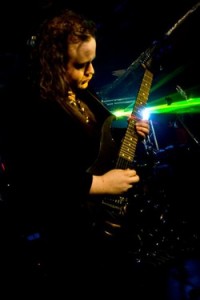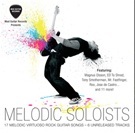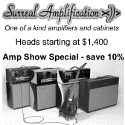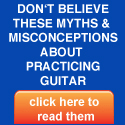4 Secrets To Recording A Massive Guitar Sound
 One of my more recent production projects was a remix of the track “United In Black” for the Leeds-based industrial rock band Zeitgeist Zero. I decided that the track needed a big fat Rammstein-style guitar part (though I tend to think that everything should have a Rammstein-style guitar part, including folk ballads and Gregorian chanting) so I recorded and added one as part of the remix. You can download the track for free by signing up to my newsletter, and in this article I’m going to discuss how I got that guitar sound, as well as some other ideas for how to record truly head-smashing riffs.
One of my more recent production projects was a remix of the track “United In Black” for the Leeds-based industrial rock band Zeitgeist Zero. I decided that the track needed a big fat Rammstein-style guitar part (though I tend to think that everything should have a Rammstein-style guitar part, including folk ballads and Gregorian chanting) so I recorded and added one as part of the remix. You can download the track for free by signing up to my newsletter, and in this article I’m going to discuss how I got that guitar sound, as well as some other ideas for how to record truly head-smashing riffs.
1: It’s about much more than just the guitar
The most important thing to realise about big guitar sounds in any record is that the guitar is only a small part of the way that those riffs pummel your ears. It certainly isn’t about turning the guitar up in the mix. Listen very closely to recordings by the likes of Rammstein or Disturbed and you will hear that the actual guitars are not all that high in the mix, despite the hugeness of the riffs.
The main issue here is that large amounts of distortion eliminate almost all of the transient (the “attack”) of each note, as high levels of gain heavily compress the sound. If there is a transient (for instance if the part is palm-muted) it will usually be a bassy thump that sounds pretty awful and needs to be EQ’d out. For the riff to smash your face, though, that attack needs to be there. There are ways to increase the attack of the guitar parts (see point 3 below) but you’ll need help from the other instruments.
Most importantly, you’ll need help from the bass guitar and kick drum. Compress the kick to maximise its transient (slow attack, fast release). EQ the bass frequencies (70Hz-ish downwards) out of the guitar sound to stop it muddying up the low end. As for the upper mid/treble frequencies, you have a choice. Either you can emphasise the treble in the kick drum for that distinctive “clicky” metal sound, or you can scoop the mids out of the bass guitar and have that fill the treble attack instead for that Mudvayne/Korn/Tool type sound. For “United in Black” I chose the former, because I was using a bass synth that wasn’t up to much in the treble frequencies but had a nice fat low end that I wanted to keep. You really notice how much the kick is driving the guitar sound in the midsection. When the kick drum pattern changes from hemiola triplets to a double-kick pattern and thus no longer follows the guitar (which continues playing in threes), listen to how the perceived attack of the guitar drops off without the kick to drive it.
Even if your song doesn’t have the bass guitar, kick drum and rhythm guitar playing in concert, you will need that attack emphasis to give some rhythmic cues in the sound. If you listen to the Deftones’ “Minerva”, you will hear a wall of compressed, multi-tracked guitar, and the distortion and compression is such that you cannot hear when one note begins and ends, and it’s up to the kick and bass to tell your head when to bang.
2: Multi-track intelligently
I’ve discussed some tips and tricks for easy multi-tracking in this article. For “United in Black”, I recorded three takes of playing, using a split signal so that I recorded a clean signal and a distorted signal from a mic’d amp onto separate tracks. I then assigned a virtual amp to the three clean tracks, set to emulate a Dual Rectifier. This gave me six tracks of distorted guitar, which I panned 3 each side. I EQ’d the six tracks slightly differently so that they would fill up the whole midrange between them.
For a big guitar sound, you’ll need at least four guitar tracks, probably six, possibly eight. I personally like to pan them all the way out, others prefer about 20/80. Don’t spread them out over the stereo spectrum though as this will detract from tightness (though it can be a good idea in other genres).
3: Don’t be lazy in the edit
Assuming you’re not going for a Deftones-style wall of fuzz, you’ll need to edit the guitar sounds so that they contribute to the attack of the sound, particularly in those vital mid frequencies. The best way to do this is to edit in silences before and after the notes, deleting the attack and decay of the note and ensuring it is completely tight to the bass and kick. Normally, cutting off the start and finish of a guitar note is a bad idea as it butchers the transient and the tail, but with this much distortion and compression there’s no transient (not one that you want to keep, anyway) and no real tail as the sustain will be enormous. The kick and bass are taking care of the transient, you just want that fuzz. As a bonus, harsh editing will eliminate any amp noise far better than a noise gate would – noise gates struggle at high levels of gain as a heavily overcooked amp will hiss almost as loud as the notes you play due to the lack of headroom.
For “United in Black” I spent almost an hour cutting up the guitar tracks so that the notes all came on and off within a few milliseconds of each other. This had the added benefit of cutting off any notes that started too early or finished too late.
4: Cheat
There are a couple of other studio tricks that can add to the size of the sound:
One technique is to add a midi synth that plays along to the guitar part, either a square wave or sawtooth type, just to increase the size of the sound and fill up any frequencies that haven’t been saturated. You’ve probably heard this technique a great many more times than you realise, as the aim here is usually to make the synth unnoticeable, but it’s a common trick in industrial music, as well as in R&B/urban music, where it’s usually added to the bass guitar to make it sound fatter (listen to Jamiroquai’s “Deeper Underground” for a really unsubtle example). The key pointer here is not to overdo it; use the faders and EQ carefully to ensure that whilst it adds to the sound, it’s not noticeable in itself unless you’re using it as an effect.
The other is to add a second (usually MIDI) kick drum sound that follows the rhythm of the riff, especially if the main kick drum part does not, just to add more attack. A variation on this, and this is something I have used in death metal-type session recording before, is to add a completely muted guitar part to boost the treble attack. I tied a flannel cloth around the strings, turned the distortion all the way up, palm-muted, and just hacked at the bottom three strings in time to the main riff. Mixed in with everything else and with the bass EQ’d out, it can really make the guitar part pack more wallop. You can hear an example of this in Rammstein’s “Rammelied”, where, during the main/chorus riff, you can clearly hear a muted guitar (maybe more than one) joining in with the bass and kick drum to make it sound chunkier.
A huge thankyou goes out to Zeitgeist Zero for allowing me to release the remix to everyone here. Their EP, “The Blackout”, on which both the original track any md remix feature is out now, and you should definitely check it out if you like the goth/industrial side of things.
–
About the Author: James Scott is a London Music Producer, writer and audio engineer. He works with up-and-coming artists to help get them noticed in the industry. Subscribe to his mailing list to receive free tips and advice that he does not share anywhere else, as well as exclusive guides and resources.










